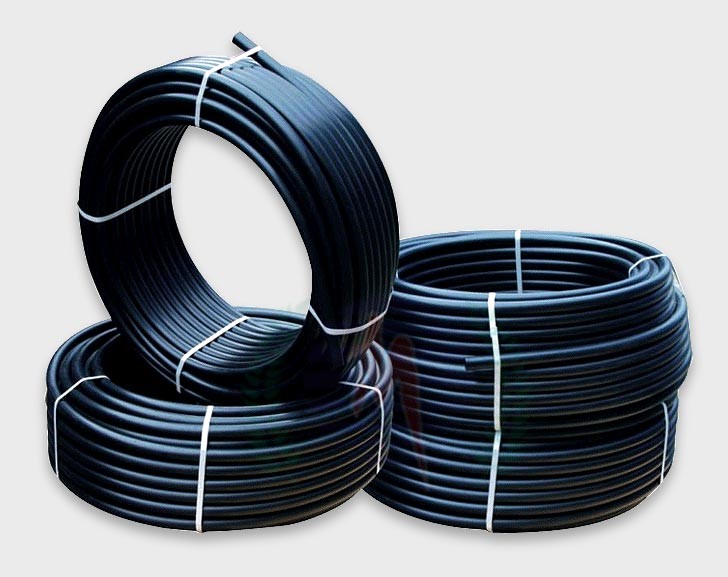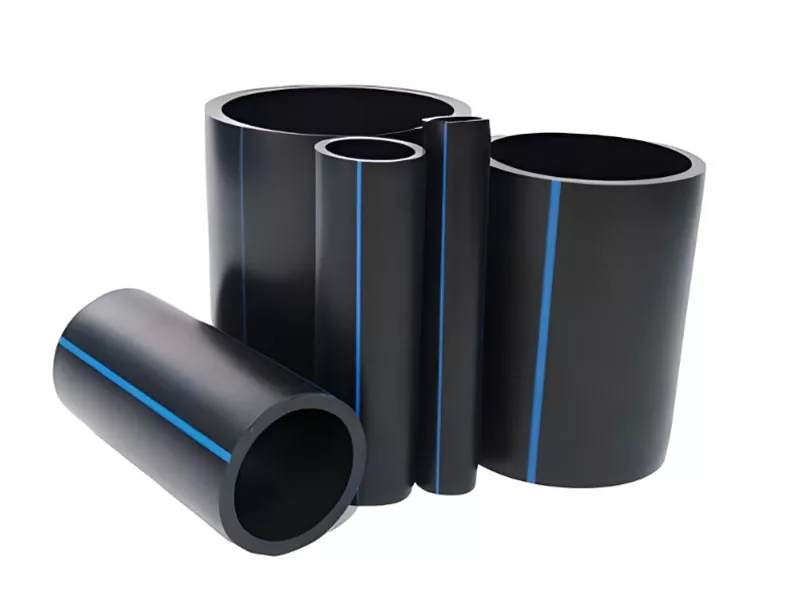Pipe Manufacturing Midland TX: From Raw Material to Finished Pipe
Wiki Article
Discover the Production Refine Behind High-Quality HDPE Pipeline and Its Applications
The production procedure of premium HDPE pipelines is detailed and systematic. It starts with the choice of basic materials that improve performance. Following this, ethylene undertakes polymerization to create material, which is then shaped with extrusion. Quality control is paramount, making certain that the final item meets rigid requirements. Nevertheless, the journey of HDPE pipes does not finish with manufacturing. Their applications throughout different industries reveal a wider importance worth checking out.Understanding HDPE: Characteristics and Advantages

High-density polyethylene (HDPE) is a functional thermoplastic known for its sturdiness and resistance to various environmental factors. This product exhibits superb tensile stamina, making it ideal for demanding applications. Its low-density framework adds to a lightweight item, assisting in simplicity of managing and setup. HDPE likewise showcases remarkable resistance to chemicals, which reduces deterioration when subjected to severe materials.
The material's reduced wetness absorption even more enhances its durability, making it optimal for usage in pipelines and storage tanks. In addition, HDPE is immune to ultraviolet (UV) radiation, making sure that items keep their integrity even when subjected to sunlight. Its versatility permits for the development of detailed shapes without jeopardizing strength. The environmentally friendly nature of HDPE, usually stemmed from recycled materials, includes in its allure, advertising sustainable practices in production. Generally, these buildings and advantages make HDPE a preferred choice for different commercial and customer applications.
Raw Material Selection for HDPE Production
The choice of resources for HDPE production is important to confirm the final product meets the preferred specifications and high quality criteria. High-density polyethylene (HDPE) is primarily produced from polymerized ethylene, obtained from fossil gas such as natural gas or petroleum. The quality of these feedstocks greatly influences the mechanical and thermal residential properties of the final HDPE.Additives also play a significant function in boosting HDPE's efficiency, consisting of anti-oxidants, UV stabilizers, and colorants, which boost resilience and resistance to environmental aspects. The choice process need to think about not only the chemical structure of the raw materials yet likewise their handling qualities to ensure effective manufacturing.
The sourcing of raw products ought to focus on sustainability and conformity with environmental policies, as accountable practices are important in today's market. Inevitably, cautious raw material option lays the structure for producing top notch HDPE pipelines appropriate for diverse applications.
The Extrusion Process: Forming HDPE Pipeline
The extrusion procedure plays an important duty fit HDPE pipelines, starting with careful product preparation methods that ensure perfect flow and consistency. Just as essential is the design of the die, which straight affects the final measurements and surface top quality of the pipeline. Together, these elements contribute significantly to the performance and high quality of HDPE pipeline production.Material Prep Work Strategies
Efficient production of HDPE pipelines begins with precise product prep work techniques, especially the extrusion procedure. During this phase, high-density polyethylene material is very first dried to eliminate wetness, making certain perfect flow attributes. The resin is after that fed right into the extruder, where it undergoes heating and melting, changing right into a viscous state. This heating procedure is very carefully regulated to maintain the material's honesty and efficiency. The molten HDPE is forced through a die, shaping it into a constant pipe type. Appropriate temperature level management throughout extrusion is essential, as it straight impacts the product's residential or commercial properties and the final product high quality. When shaped, the HDPE pipe is cooled and cut to specified sizes, ready for succeeding handling and applications.Die Layout Significance
Precision in die design plays a necessary function in the extrusion procedure of HDPE pipes. The die serves as the final shaping tool, directly affecting the pipe's measurements, wall surface density, and surface area coating. A properly designed die guarantees uniform product flow, minimizing problems such as irregularities and vulnerable points. The geometry of the die must be maximized to suit the details residential or commercial properties of HDPE, including its viscosity and thermal actions throughout extrusion. Furthermore, the cooling rate of the product as it goes through the die can markedly influence the pipeline's architectural honesty. Investing in advanced die innovation is important for manufacturers aiming to produce top quality HDPE pipes that fulfill sector requirements and customer expectations.Quality Assurance Procedures in HDPE Production
Although numerous aspects influence the top quality of HDPE pipe manufacturing, effective quality assurance actions are vital to ensure uniformity and integrity in the last item. Secret quality assurance methods consist of rigorous product assessment, confirming that the raw polyethylene meets well-known standards for purity and density. During the extrusion process, specifications such as temperature, pressure, and cooling time are carefully kept an eye on to keep dimensional precision and architectural integrityFurthermore, post-production testing is necessary; manufacturers frequently conduct hydrostatic tests to examine the pipeline's stamina and resistance to stress. Visual evaluations for surface flaws better improve high quality assurance. Qualification from relevant requirements organizations, like ASTM or ISO, gives an extra layer of trustworthiness. By executing these comprehensive high quality control actions, producers can minimize defects, enhance efficiency, and ensure that the HDPE pipelines satisfy the details demands of numerous applications, eventually leading to client fulfillment and count on the product.
Applications of HDPE Pipe Across Industries
HDPE pipes are utilized throughout different sectors because of their durability and adaptability. In water circulation systems, they assure reliable delivery, while in wastewater administration, they offer reliable options for waste transport. Additionally, agricultural watering networks gain from HDPE's resistance to deterioration and flexibility, making it an optimal option for contemporary farming methods.
Water Distribution Solutions
A considerable number of sectors count on high-density polyethylene (HDPE) pipes for effective water distribution systems. Understood for their durability and resistance to corrosion, HDPE pipelines are extensively made use of in local water system networks, farming watering, and industrial applications. Their lightweight nature helps with simple handling and setup, lowering labor expenses and time. Furthermore, HDPE pipes can accommodate numerous stress levels, making them appropriate for both low and high-pressure systems. American Plastics HDPE Pipe Manufacturing. The versatility of the material permits smooth integration right into existing framework, decreasing the need for extensive excavation. Additionally, HDPE's resistance to chemical leaching warranties that the water provided stays risk-free and clean, making it an ideal selection for maintaining the top quality of potable water across different sectorsWastewater Administration Solutions
Efficient water distribution systems also pave the means for innovative wastewater monitoring services, where high-density polyethylene (HDPE) pipelines play a significant role. Popular for their longevity and resistance to deterioration, HDPE pipelines are suitable custom hdpe pipe manufacturing Midland TX for transporting wastewater in different setups. Their flexibility permits for simple installation in complex environments, reducing the need for considerable excavation. Additionally, HDPE's smooth indoor surface area reduces rubbing, enhancing flow prices and performance. These pipelines are additionally resistant to chemical leaching, making sure that impurities do not jeopardize the surrounding setting. Industries, towns, and therapy centers significantly count on HDPE pipelines for their dependability and durability, making them a preferred selection for contemporary wastewater administration systems. This versatility underscores the essential relevance of HDPE pipes across numerous applications.Agricultural Irrigation Networks
Agricultural irrigation networks profit significantly from using high-density polyethylene (HDPE) pipes, which give reliable and trustworthy water distribution to crops. HDPE pipelines are lightweight, making them simple to transfer and install, while their versatility permits numerous setups in varied surfaces. These pipes show outstanding resistance to corrosion, chemicals, and UV radiation, making certain longevity in rough farming environments. Additionally, their smooth interior surface area decreases friction loss, optimizing water flow and minimizing energy prices connected with pumping. The long life of HDPE pipelines, commonly exceeding half a century, contributes to lower upkeep and replacement expenditures. Subsequently, farmers increasingly rely on HDPE pipes to boost irrigation performance and advertise sustainable agricultural methods, ultimately leading to improved crop returns and resource preservation.Future Patterns in HDPE Pipe Innovation
As the demand for lasting and reliable framework expands, improvements in HDPE pipe innovation are poised to transform different markets. Arising patterns include the integration of clever modern technologies, such as sensors and IoT abilities, which assist in real-time tracking of pipe conditions, minimizing maintenance prices and stopping leakages. In addition, the development of innovative manufacturing methods, such as 3D printing, is enabling the production of facility, customized pipe designs that provide to details task demands.The emphasis on recycling and round economic climate techniques is driving the advancement of HDPE pipelines made from recycled materials, boosting sustainability. Boosted jointing approaches, such as electro-fusion and mechanical fittings, are also boosting installment performance and dependability. Finally, the growing emphasis on environmental guidelines is pushing producers to take on greener manufacturing processes, ensuring that HDPE pipelines not only satisfy industry criteria yet additionally foster a more lasting future for framework development.
Often Asked Questions
Exactly How Does HDPE Contrast to Various Other Plastic Products?
HDPE surpasses several various other plastic materials relating to longevity, chemical resistance, and adaptability. Its reduced thickness and high tensile toughness make it ideal for various applications, usually exceeding alternatives in both efficiency and long life.What Are the Environmental Effects of HDPE Manufacturing?
The environmental influences of HDPE manufacturing include greenhouse gas emissions, energy usage, and possible contamination from manufacturing procedures. Furthermore, inappropriate disposal can lead to dirt and water contamination, increasing problems about long-lasting ecological effects.Can HDPE Pipes Be Reused?
Yes, HDPE pipes can be recycled. Several centers accept made use of HDPE for handling, transforming it right into brand-new items. This recycling adds to sustainability initiatives, reducing plastic waste while conserving sources and energy in the manufacturing cycle.What Is the Life-span of HDPE Pipeline?

Just How Do Temperature Variations Influence HDPE Pipe Performance?
Temperature level variants substantially impact HDPE pipe efficiency, influencing flexibility and toughness. Heats can cause softening, while reduced temperatures may cause brittleness, eventually affecting the pipe's resilience and suitability for numerous applications in diverse settings.Report this wiki page